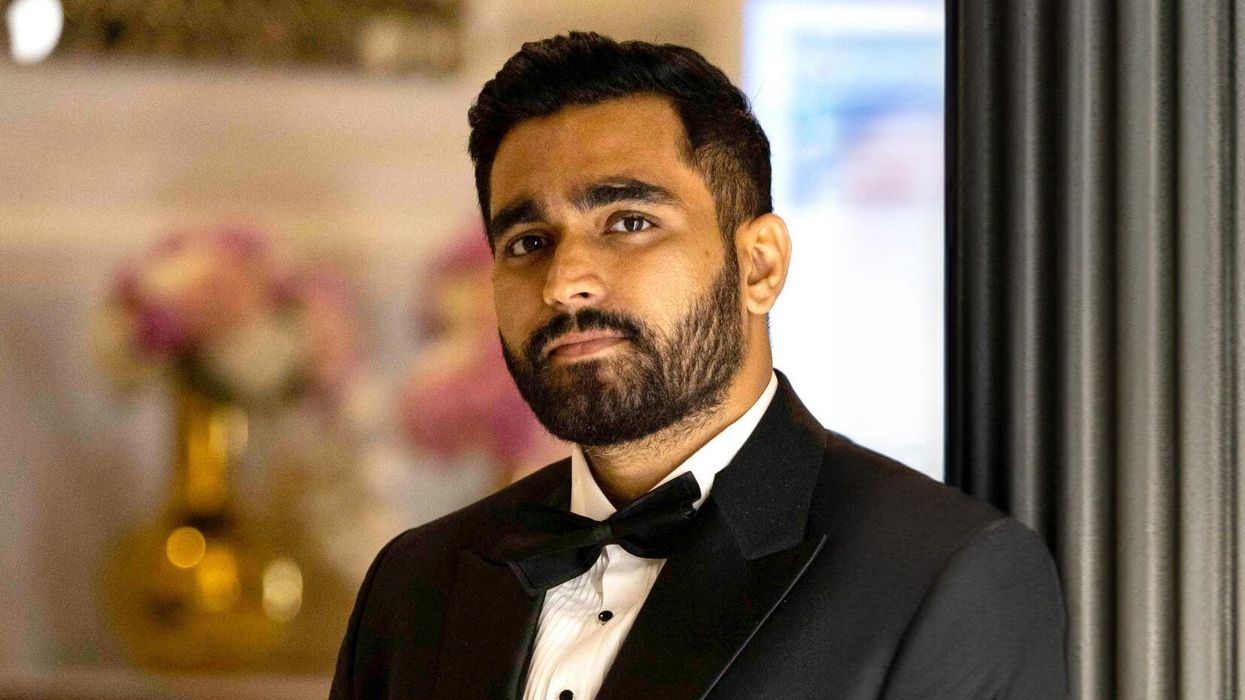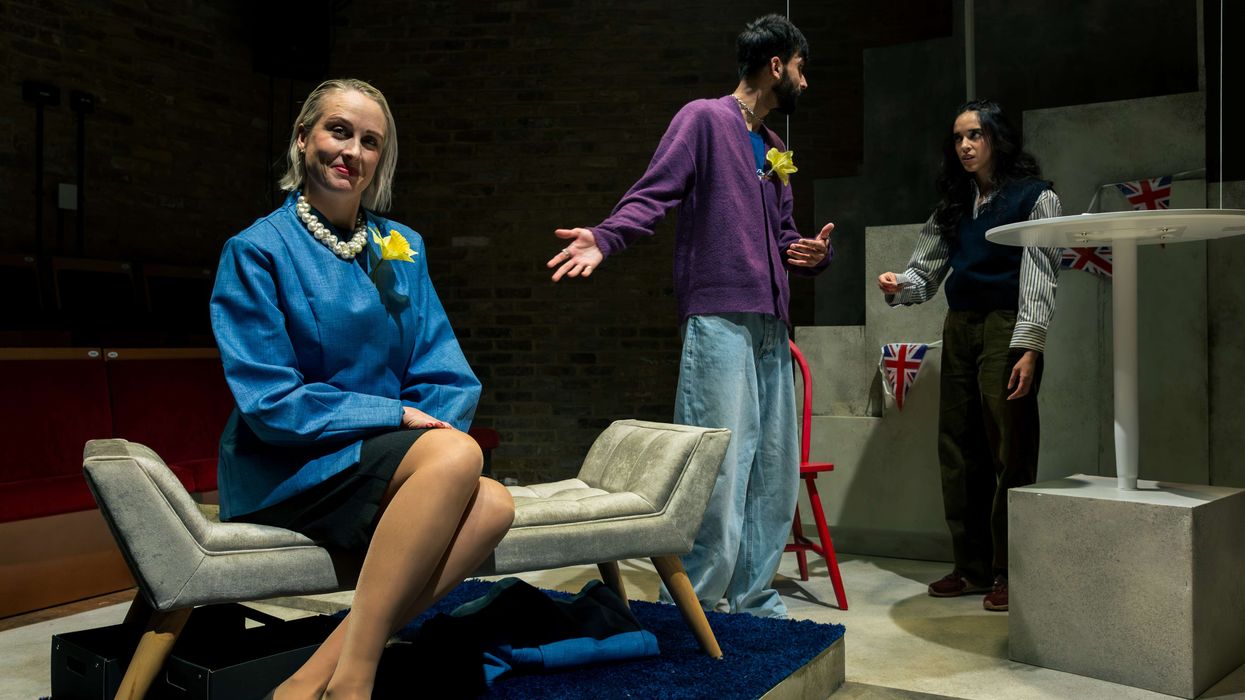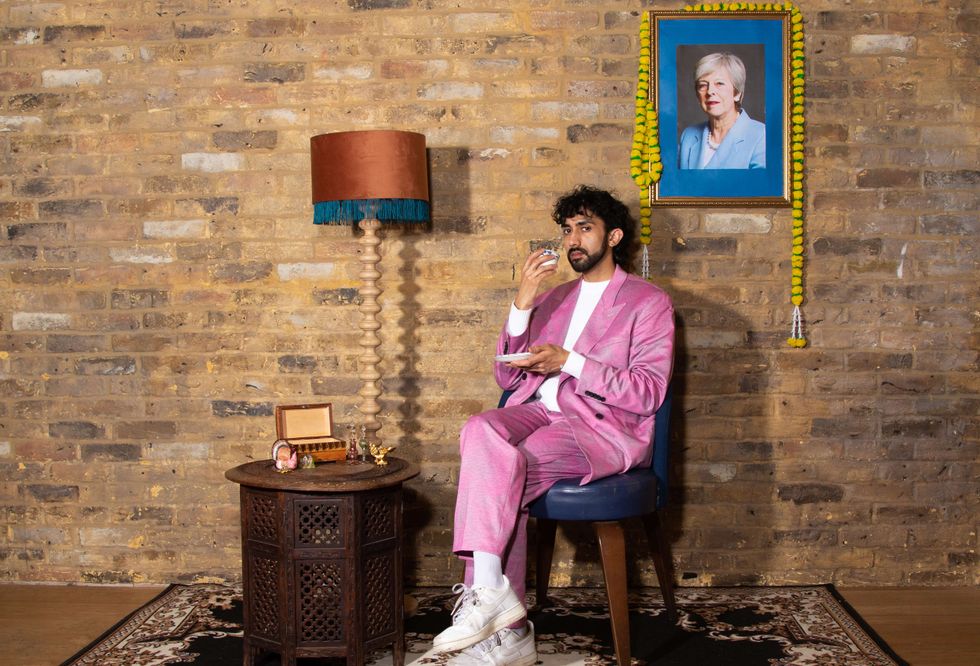THERE is magnificent momentum behind multi-talented Indian star Viraj Ghelani. The cool creative has gone from making popular YouTube videos to headlining the hit film Jhamkudi, which has been Gujarati cinema’s biggest triumph of 2024.
The hit supernatural comedy-horror adds to the unstoppable star’s many successful projects, which he has added to with an exciting and growing stand-up comedy career.
That journey from content creator to film star and stand-up comedian has given him a rapidly growing fan base, including more than 1.2 million Instagram followers.
He plans to balance movies with comedy, helping Gujarati cinema continue its impressive recent rise.
Eastern Eye caught up with the actor, comedian and digital content creator to discuss his inspiring journey, hit Gujarati film debut, love of comedy, future hopes, recent Cannes trip, and sources of inspiration.
What first connected you to creativity?
I started off as an engineering student, but deep down, I always knew I wanted to be an entertainer, an artist, and, especially, to do comedy. Engineering just wasn’t making me feel alive. So, I had a heartfelt conversation with my parents, asking them to give me a year to explore this passion. Thankfully, they were incredibly supportive and agreed.
What happened during that year?
I dropped out and began creating funny videos, really diving into what made me feel most alive. Eventually, I joined Pocket Aces, where I had the chance to work on my own content. This led to opportunities with Filter Copy, and my presence on Instagram started to grow. That’s how my creative journey began, and it went well enough that I never looked back at engineering. Pursu - ing something creative has always been about finding what truly makes me feel content and alive.
What drew you towards comedy in particular?
Ever since I was a kid, I had a knack for making people laugh. Whether at school or during family get-togethers, I was always the one lightening the mood with a joke or fun - ny story. There’s something incredibly rewarding about seeing someone smile because of something you said. Growing up, we faced our fair share of challenges – my father lost his job, and my mother worked to keep things running. During those tough times, humour became my escape.
Tell us more about that.
It was my way of coping and bringing a bit of joy to my family. Watching them laugh, even when things were tough, felt like magic. Comedy isn’t just about the laughs for me; it’s about connection – about finding a way to relate to people.
It brings them together through shared moments of joy. The feeling of making someone’s day a little brighter is what drew me to comedy, and it’s what keeps me going every day.
Did you expect your videos to be so successful?
Honestly, no. When I started making videos, it was just a fun way to share my quirky take on everyday situations. I didn’t have any grand expectations, but seeing how people connected with my content, how they laughed with me and supported me was surreal. It’s been a wild ride, and I’m grateful for every single viewer who’s been part of this journey.
How has acting in films been for you?
Acting in films has been an incredible learning experience. It’s a different world compared to making online content. The scale is bigger, the stakes are higher, and the team effort is immense. I loved every moment of it – the camaraderie on set, the long hours and the creative challenges. It pushed me out of my comfort zone and helped me grow as an artist.
How much does the success of your Gujarati debut film, Jhamkudi, mean to you?
It means the world to me. This film is not just a project; it’s a piece of my heart. Seeing it resonate with audiences, especially in my home state, is very fulfilling. It’s a validation of all the hard work and passions everyone involved put into it. Plus, making my community proud is an honour I cherish deeply.
Why did the film connect with audiences?
I think it’s because we tapped into something real and relatable. The film mixes humour, emotions, and a strong message that resonates with people’s everyday experiences. What made it even more special is that it didn’t take away from my comedic essence, which is how I started my career. We kept that authentic, humorous touch throughout the film, staying true to my roots. I believe that’s why so many people found it relatable and connected with it.
Will you be doing more Gujarati movies?
Absolutely. This experience has been so rewarding, and I feel a deep connection to my roots. I want to explore more stories from our culture and bring them to life on the big screen. So yes, you’ll definitely see more of me in Gujarati cinema.
Do you have a dream role as an actor?
Oh, definitely. I’d love to play a character that’s a mix of comedy and drama – something that challenges me to show a wide range of emotions. Maybe a character that starts off as a joker but has a deep and poignant backstory. Something that makes people laugh and cry at the same time would be my dream role.
What was the experience of attending the Cannes Festival this year?
Being at Cannes was truly surreal. Transitioning from a content creator to being part of such a prestigious film festival felt like a huge leap. I was there for the movies, and that was my focus throughout. Walking the red carpet and meeting filmmakers from around the world was incredibly inspiring.
What were some memorable moments from Cannes?
I had the incredible opportunity to attend exclusive screenings, like Furiosa: A Mad Max Saga, and meet Chris Hemsworth. Watching the premiere of Kinds of Kindness with its cast was another major highlight. I also attended the screenings of Horizon: An American Saga and Sister Midnight, which was even more special as my cousin was part of the film’s graphics team. These experiences were enriching and eye-opening, making me feel deeply connected to the essence of the festival, which is all about celebrating cinema.
What drew you towards a career in stand-up comedy?
I’ve always enjoyed making people laugh, especially through my Instagram and YouTube content. However, I wanted to see if I could captivate an audience in a live setting. With my debut film (as a lead) on the horizon, I thought it would be an excellent time to venture into stand-up comedy. It was a way to show producers that I can draw an audience and prove my appeal and versatility as an artist. I consider myself an artist who thrives on challenging every platform, and stand-up comedy felt like the next logical step forward.
You are multi-talented, finding success in standup comedy and acting, but what takes priority?
That’s like asking a parent to choose their favourite child. Both are incredibly important to me. Stand-up is basically comedy sketches performed live in an interactive space, so it’s the art form where I started and keeps me grounded. On the other hand, acting is a new adventure that expands my horizons. They complement each other, so I plan to keep balancing both as best as I can.
Viraj Ghelani with Chris Hemsworth at the Cannes Film FestivalWhat can we expect next from you?
A lot of exciting announcements in the coming months. I’m currently juggling a mix of film projects, new online content and stand-up shows that I’m pumped about. There’s a whole array of surprises and fresh adventures waiting to unfold, and I can’t wait to share them with my audience. It’s going to be a thrilling ride, and I’m eager to bring everyone along.
Who would you love to work with?
There are so many talented people out there. I’d love to work with filmmakers who challenge norms and push creative boundaries, creating impactful stories. Collaborating with actors who bring a unique energy and perspective to their roles would be amazing and truly inspiring. If I had to name a few, I’d say working with filmmakers like Sanjay Leela Bhansali, Karan Johar, Rajkumar Hirani, and Imtiaz Ali would be a dream come true for me, as their work has always left a lasting impact on audiences.
What inspires you?
People inspire me – the stories I hear, the experiences I witness, and the emotions I see in everyday life. My family, friends, and fans constantly motivate me to keep going. And, of course, the desire to make people laugh and think drives me every day. Life is full of inspiration – if you’re willing to look for it.
Instagram: @viraj_ghelani






 Vivek Nityananda
Vivek Nityananda  Taraash Mehrotra as Nikhil
Taraash Mehrotra as Nikhil






